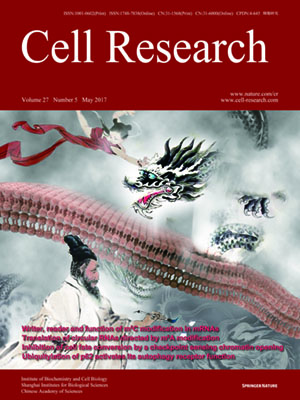
Volume 27, No 5, May 2017
ISSN: 1001-0602
EISSN: 1748-7838 2018
impact factor 17.848*
(Clarivate Analytics, 2019)
Volume 27 Issue 5, May 2017: 705-708
LETTERS TO THE EDITOR
Structural basis of stringent PAM recognition by CRISPR-C2c1 in complex with sgRNA
Dan Wu1,*, Xiaoyu Guan1,*, Yuwei Zhu1,*, Kuan Ren1 and Zhiwei Huang1
1HIT Center for Life Sciences, School of Life Science and Technology, Harbin Institute of Technology, Harbin 150080, China
Correspondence: Zhiwei Huang,(huangzhiwei@hit.edu.cn)
The clustered regularly interspaced short palindromic repeat (CRISPR)-Cas systems function as adaptive immune systems in bacteria1,2, which are used to defend against phages and invading nucleic acids. The CRISPR-Cas systems are broadly grouped into two classes: Class 1 systems contain a multi-subunit protein complex, whereas Class 2 systems use a single effector protein, as exemplified by the well-studied Cas93. Cas9 is an RNA-guided endonuclease, which targets and cleaves DNA bearing complementary sequences to the guide RNA. Protospacer adjacent motif (PAM) recognition by Cas9 and crRNA:tracrRNA complex is a critical prerequisite for substrate DNA melting and guide RNA:target DNA heteroduplex formation4,5. Both catalytically active and inactive Cas9, combined with a single-strand guide RNA (sgRNA), have been widely used as programmable systems for various genetic manipulations6,7.
10.1038/cr.2017.46
FULL TEXT | PDF
Browse 1481


